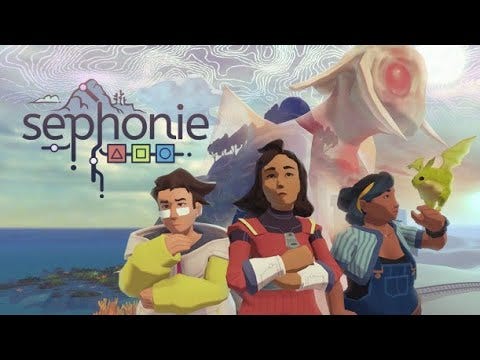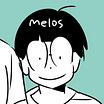Sephonie (2022): Embodying Expression Through ONYX Linking
Melos Han-Tani on expressing inter-species communication through the design vocabulary of ONYX Linking
Follow the developer: (Twitter, Blog)
Sephonie is a game made with Marina Kittaka. It follows three Taiwanese-ancestry scientists on an uninhabited island, incorporating 3D visual novel, 3D platforming, and puzzle-like Linking segments. This post is about Linking.
Trailer:
What’s Linking?
It’s a process where the protagonists use their “ONYX” brain implant to connect to creatures and exchange info with Sephonie - the supernatural entity embodied by the game’s island setting. Linking, then, contains narrative weight: it acts as a break in-between 3D platforming, and sets up the emotional “Mindshare” narrative sequences. Today I’d like to eventually talk about the design of an important creature in the game - but I need to outline the Linking system first.
Mechanics of Linking
Take a look at this video below of an early-game Link in action.
The player tries to score points by connecting pieces into single-color islands. When you can’t make another move, ending your turn lets creatures move, changing the board state. (E.g. creating more Stones to block your pieces.)
Linking is fairly easy in the main game, but the player has the option to replay them and set records for how fast they can win. Trying to beat my developer times can be hard, but it’s also where you can best feel the textures of the Link level designs.
The way all the obstacles “get in the way” of the easy goal of making big islands - this is what allows for expression.
Gems, Gridspots and More
Things on the board are called "Gems", and spots on the board are "Gridspots." You might have a Slime Gem: it destroys any part of a piece you place on it. Or, there might be a Stone Gem: you can't place a piece on it, but if you place a piece NEXT to it, it'll break the Stone. For Gridspots, a Garbage Gridspot destroys anything placed on it. Other Gridspots give extra points when a certain color of piece is on it. ...And so on!
(if you want to see all the Links, check out this speedrun by shovelclaws)
These level design tools - Creature Moves, Board Shape, Gridspots, Gems, were combined in different ways to make about 40 Links, but the design space feels much wider than that. There’s a fun, fast-paced reactiveness inherent to these aspects. Gems block your way, your pieces constrain the board, Creature moves shift the level in surprising ways. In Linking, the levels feel alive - they are simple but unique conversations looking to be understood.
Is Linking a Puzzle Game?
Linking is about intuitively and quickly responding to how the board evolves. Responding to Gems and Gridspots can feel action-like, even strategic. But it’s not quite right to call it an Action, Puzzle or Strategy game. The reason Linking works well for expression is its elements can be pushed in different directions. What if a board has a ton of Garbage Gridspots? What if a creature turns all your green pieces into Slime Gems with its moves? What if a board is very tiny? Each of these create different feelings. Through these feelings it’s possible to create a abstract ‘gameplay portrait’ of a bird, a squid, or a speculative creature.
These ideas came from simplifying an overly thinky, complex, adversarial card-board-game-esque prototype. How that simplification happened is a topic for another time, but the trick was to simplify away complex card-game-rules by embodying them as the more intuitive Gems and Gridspots. Rather than a game focused on ‘defeating the enemy,’ it’s about ‘trying to understand the creature.’
Designing the Key Species, Nemagnathi
My favorite Link designs are the Key Species: it’s where I was able to make many interesting one-off rules that pushed Links in unexpected directions. Nemagnathi is one of Sephonie’s 5 key species: important creatures on the island which serve organ-like roles. Nemagnathi senses the island’s state, from a deep swampy cavern. Symbolically it aligns with Ing-wen, the more sensitive protagonist. So, how does one make a Link about “sensing”?
Coding flexibility and the confidence to improvise is key to my personal practice of level design, so with the base rules of Linking in place, it was straightforward to design the Link. What if a Link had very particular rules about where you could place pieces? To answer that, I made the "Zooid Gems." Nemagnathi’s board is unique in the following ways:
All pieces you place get deleted, UNLESS
You place the piece in a Zooid’s safe zone (a line or a 3x3 box).
Zooids move each time you place a piece.
Some Zooids change your piece’s colors if you overlap them.
Zooids “sense” where the safe zones are. So Nemagnathi’s link feels like communicating with a creature that is has this awareness of how to safely place your pieces, which you, too, can understand and make use of, provided you pay attention. This Link has three phases. Each phase, Nemagnathi changes which Zooids are on the board. Perhaps this could be thought of Nemagnathi having a shifting mood?
You can complete the Link by slowly building islands over multiple turns. But if you plan ahead a bit, you can make use of the Color-boost Gridspots to score extra points.
This was just one Link idea, but I hope you can imagine the ways in which I could create different feelings through the design of the various Links! Through my design tools, I could turn these grid-looking boards into almost-explorative spaces.
Future of Linking
It’d be neat to make more Links. A fan survey showed the desire for Links that represent different people, or objects - not just creatures. Fans ask what it’d be like to Link with people in certain moods, or with other mind modifications or personalities. It would have been too hard to answer that within Sephonie due to its form, but now that I understand Linking’s design space it’s hard not to wonder what else could be done, especially by tweaking fundamental rules. A puzzle mode with fixed and limited pieces? A straight up harder difficulty? Links whose results influence other Links, or connect more directly to other gameplay systems? Links with more designed/fixed decks of pieces?
I don’t know if I’ll get to work on these myself, but with Linking out there in the open, the ideas are available for anyone to pick up and work from. Either way, I’m glad how our loose, expressive and conversational Linking system came out.
My Bounty
My Game Design Bounty is a Sephonie Linking-like - or more generally - any game with a puzzle-action-strategy-like system with a lot of fun and expressive possibilities.
… Oh, and I’d love to see a ‘future/fantasy sports’ game set in a world where everyone lives and breathes that sport - but without that trope’s usual dystopian bloodsport twist.
After Journey’s End is a volunteer-run journal, entirely by independent game developers. Subscribe for free!






I had taken Nemagnathi's gimmick to communicate sending different signals to different parts of the body/island, But sensitivity is a part of knowing where and what's needed, as is planning to have useful pieces at the right time.